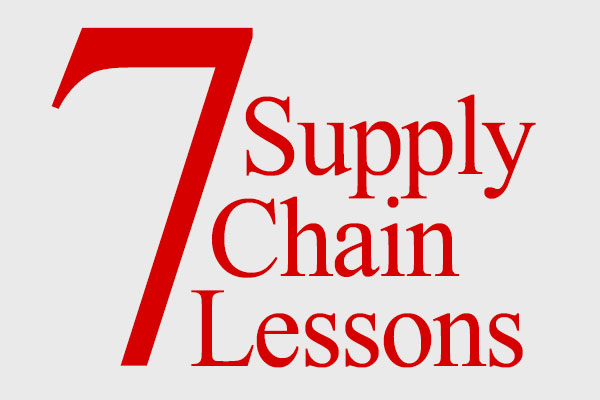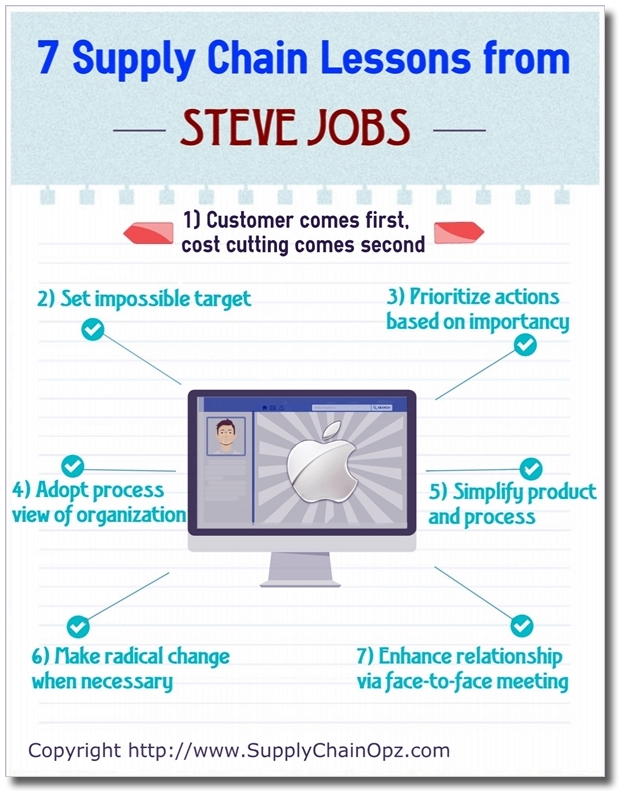Apple Inc is regarded as the best company in the world for its cutting-edge supply chain management practices.
What’s the secret behind its success?
This article will explain to you what we can learn from the co-founder of the company.
Apple Inside Nutshell
It goes without saying that Apple Inc is famous for its strengths in product design, product development, branding and marketing strategy.
When it comes to supply chain management practices, many people believe that its supply chain model and sophisticated software system are the secret weapons that help them maintain market leadership.
In April 2012 (six months after Jobs’s death), Harvard Business Review published the article called “The Real Leadership Lessons of Steve Jobs”.
The author of this article is Walter Isaacson who helped Steve Jobs completed his best-selling biography.
Isaacson identifies practices that he believes people should learn. Even though it’s about business management in general, the article contains some interesting aspects about supply chain management as below:
Seven Supply Chain Lessons
- Customer comes first, cost cutting comes second: the philosophy of product development at Apple is to build “insanely great” products that customer wants to buy. Simply put, Jobs pursued differentiation or value creation strategy. And when the whole supply chain takes actions in sync with this strategy, the success is phenomenal! During 1983 to 1993 when Jobs didn’t take the helm of the company, cost reduction/profit maximization was the primary strategy which resulted in the spiral down of the company.
- Set impossible target: when Jobs decided that he wanted the face of iphone to be scratchproof glass, he turned to Corning who developed the technology called “Gorilla Glass” but it’s just prototype in R&D lab. Jobs indicated clearly that he wanted a major shipment of Gorilla Glass within 6 six weeks which was beyond the capability of Corning. However, Job insisted on this request and later Corning converted one of its LCD production line to produce new kind of glass.
- Prioritize action: after Jobs returned to Apple in 1997, there was a wide array of unrelated product lines. Then, he announced that he needed only 4 product categories, namely, “Consumer”, “Pro”, “Desktop” and “Portable”. By segmenting products properly, Jobs reduced the complexity of supply chain big time and his team can prioritize actions required to support the strategy.
- Adopt process view: Jobs ensured that the performance of microprocessor down to the experience of buying products at its stores was linked together. To do this, Apple increased internal integration by establishing common goal across business units.
- Simplify product/process: it said on Apple’s first marketing brochure that “Simplicity is the Ultimate Sophistication”. In literal meaning, Jobs eliminated unnecessary components which led to the reduction of inventory and smoother production process.
- Make radical change when necessary: the integration of Ipod, Itunes and Itunes Store revolutionized music industry. However Jobs was afraid that someone would added music players in phone’s handset, then, he decided to discontinue the sales of Ipod and created the Iphone. Radical change or “Reengineering” may be necessary if external forces are strong.
- Enhance relationship via face-to-face meeting: Jobs believed great ideas couldn’t be developed solely via e-mail. From his experience, he created ideas from long meetings or even when you ran into someone. This lesson works well for both internal and external relationship.
Discussion
Supply chain management is everywhere, from strategy formulation, product segmentation, product/process design down to customer satisfaction. Supply chain professionals adopt whatever concepts that help to create value.
Even though Apple Supply Chain has some “hiccups” such as various problems of suppliers in Asia, they are definitely one of the role models in supply chain management.
Is there any other lessons from Jobs that’s not covered here? Register, and let us know your comments below.
Editors Note: Original article posted on SupplyChainOpz

Article topics
Email Sign Up

















